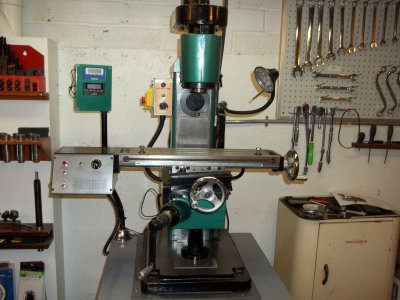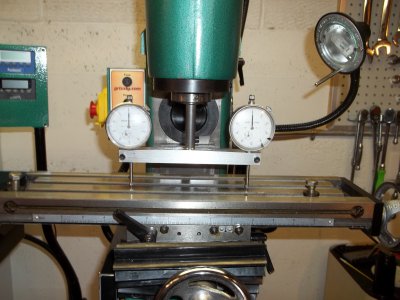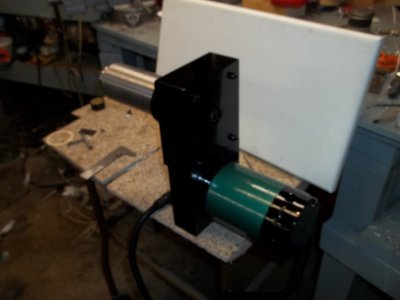- Joined
- Feb 7, 2013
- Messages
- 792
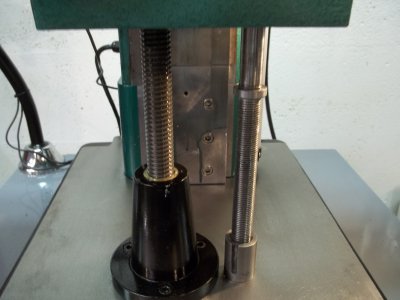
As you can tell from this picture the manufacture thought they would save a few bucks and mount the lead screw off center both ways. This probably would not be a big deal except when the gibs are tight to where the machine is usable the table twist both directions and shudders as you crank the table up or down. It drives the DRO nuts and is hard to come into something blind without breaking a cutter it would act like the table lock was tight. I had some time and I found an extra base incase my idea did not pan out so I thought I could make it better.
- - - Updated - - -
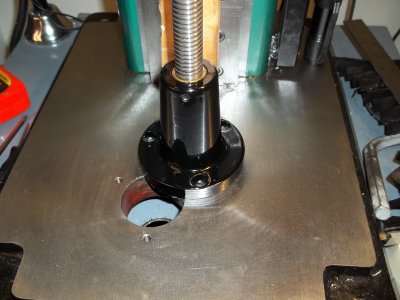
To start with I made a new lead screw nut base this one is made without a centering shoulder it is not needed I did not have any cast iron so it is made out of steel where it is setting is centered with the table. I checked my theory with a small jack and the table went up and down nicely no jitter.
- - - Updated - - -
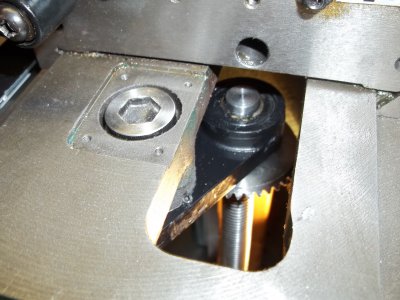
After some careful measuring I came up with a 1 1/2 x 1/2 steel bar stock and welded a piece of tubing to one end I then machined the whole unit so it was true and machined it for two bearings something it never had. the alan head bolt is something I made up and that is the original spot the lift scew come through it is now 2 inches back and 1 inch or so to the side.
- - - Updated - - -
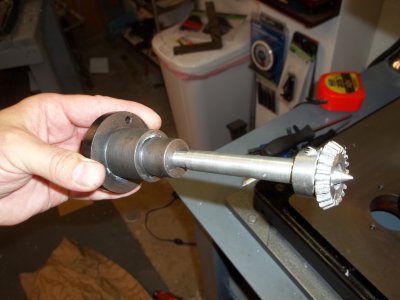
I then machined a aluminum shaft with a point on it for the crank screw and for the bearing block so I could perfectly aligh both shafts so both gears could mesh perfectly.
- - - Updated - - -
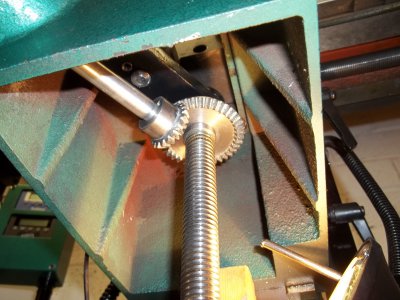
You can see from this photo the bearing block in place and the crank gear meshing with the main.
- - - Updated - - -
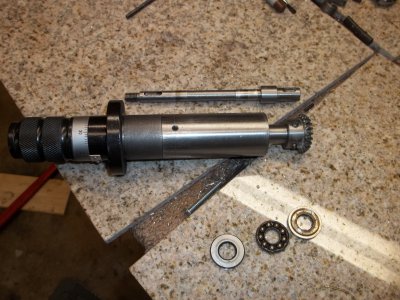
As you can see in this picture I made a longer shaft out of stress proof and I made a longer bear support to fit the original bearing support. There was no bearings in this unit except for a couple of thrust bearings shown in the photo. I used ball bearings at each end the front bearing is a Ford alternator bearing it was 10 x 27mm it pressed right into the stock housing the rear was a standard 10 x 28.






Last edited:


